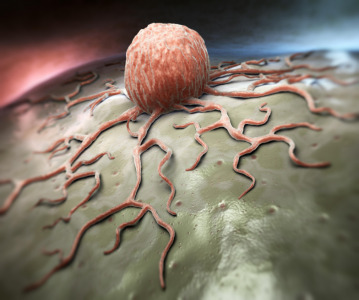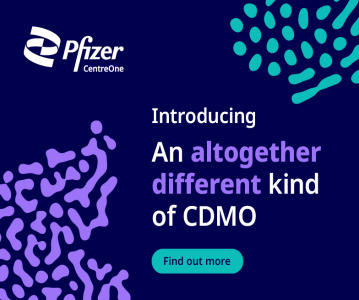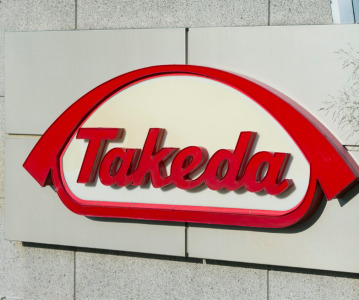Unlocking the potential of cannabinoid-derived drugs
.jpg)
Following the 2018 FDA approval of GW Pharmaceuticals’ Epidiolex®, there has been increased interest in the development of cannabinoid-derived drug substances for innovative new therapies. We examine the state of the market and future potential for drug development in this space.
Orphan drug indications look set to benefit from novel cannabinoid-based therapeutics
FDA approval of GW Pharmaceuticals’ Epidiolex® on 25th June 2018 is widely considered to be a landmark in cannabinoid-derived drug development. Not only is Epidiolex® the first FDA-approved drug that contains a purified drug substance (cannabidiol) derived from the Cannabis sativa plant (marijuana), but it is also the first FDA approved drug for the treatment of patients with a rare and severe form of childhood epilepsy, Dravet syndrome. Despite these exciting breakthroughs fueling increased interest within the pharmaceutical industry to develop cannabinoid-derived therapeutics, major challenges remain; there are scores of unapproved yet readily available cannabinoid-derived consumer products and limited patient access to safe, effective and approved pharmaceutical products, beyond Epidiolex.
“The GW Pharma product was developed for an orphan population and was granted fast track designation, which allows for greater market exclusivity and an expedited review pathway relative to a conventional pharmaceutical product,” reports Joshua Hoerner, Chief Innovation Officer at Purisys. “This paves the way for future cannabinoid-derived therapeutics to follow suit, especially since these drugs offer significant promise to treat other orphan indications for which there is currently high unmet medical need. For example, epidermolysis bullosa (EB) is a rare, incurable condition whereby blisters form on the skin and mucous membranes at even the very lightest touch. InMed Pharmaceuticals recently announced that a rare cannabinoid, cannabinol (CBN), is the active component of its prospective EB treatment INM-755, a product that has just entered Phase I trials in The Netherlands and may benefit from fast-track designation further down the line.”
Synthetic versus natural
Although the launch of plant-derived Epidiolex® has been a major success story, a limitation of botanically-extracted drugs is that they can suffer from product drift. “Synthetic drugs are an easier and less risky choice for a sponsor as they provide far greater capacity from a product quality perspective,” notes Brian Furmanski, Ph.D., Senior Director, Clinical Pharmacology & Regulatory Affairs at Nuventra Pharma Sciences and a former Senior Clinical Pharmacology FDA Reviewer. Indeed, there are already three synthetic cannabis-related drug products on the market: Marinol (dronabinol), Syndros (dronabinol), and Cesamet (nabilone). With a natural product, the presence of potentially dozens of different molecules in the extract contributes to product variability and drift and can make analytical characterization an extremely challenging activity. Add to that the individuality of a crop, which can impact on cycle times, and the presence of pesticides, heavy metals and environmental impurities that can affect potency, and it becomes increasingly difficult to secure a consistent supply chain.
“Drug developers may be more likely to gravitate toward a synthetic approach because it is more clearly defined,” explains Hoerner. “However, both natural and synthetic routes to developing cannabinoid-derived drugs have their place, and it is important to remember that it is the labeled active ingredient itself that provides the mode of action and treats the condition. Saying that, should a company developing a cannabinoid-based therapy want to access a rare CBD and use it to treat an orphan drug indication, a synthetic route is likely a better choice. Synthetic production obviates the need for long-lead time and laborious genetic modifications to express economically relevant quantities of a specific cannabinoid; it also provides confidence that a well-defined, high quality, product free from contaminants will be reproducibly and economically achieved time after time. Additionally, synthetic means provide a point of access for the next generation of non-naturally occurring cannabinoids.”
Development challenges
Although oral dosing is the most straightforward form of drug delivery, typically associated with high patient compliance, one perceived issue associated with developing stable and ingestible cannabinoid-derived drugs is their inherently oily and labile nature. “There is a common misconception that cannabinoids cannot be made into a stable, solid crystalline powder form,” says Hoerner. “This is not the case. For example, pure CBD is an odorless white, crystalline powder, as are many other cannabinoids like CBDA, CBGA, THCA, CBDV, and CBG. These highly pure, solid and stable API forms are generally easier to handle prior to being included in various formulation technologies.”
Hoerner adds that cannabinoid-derived drugs can also be problematic to isolate whether they be accessed through botanical extraction, biosynthetic or synthetic means, due to their inherent labile characteristics. “CBD itself can degrade to Δ9-THC, Δ8-THC, become hydroxylated, or form a quinone under the right conditions,” he explains. “Thus, an in-depth knowledge of the stability of the API itself as well as in the dosage form is required to ensure a consistent product that meets pharmaceutical quality standards.”
One company striving to improve drug bioavailability by providing proprietary formulation and delivery platforms is CURE Pharmaceutical, widely recognized within the industry for its pioneering oral thin film technology. “The Agricultural Improvement Act passed in December 2018 really opened up a lot of possibilities for us to start working with plant-derived cannabinoids, specifically cannabidiol,” notes Jessica Rousset, COO. “At CURE, we’re exploring self-emulsifying drug delivery systems: taking these oily, fatty molecules and putting them into solutions, increasing their bioavailability in the process. That’s currently a big gap in the field, and one that we’re trying to fill through our own innovation and by means of acquisition opportunities and strategic partnerships in the cannabinoid space.”
Regulatory perspectives
The pathway for cannabinoids to be approved as drugs is relatively straightforward due to the wealth of existing FDA guidance for the regulatory approval of pharmaceuticals. “There is real consumer excitement over CBD and hemp-based products available today in retail outlets or online,” says Hoerner. “Where there is confusion is in situations where irresponsible industry produces an unapproved product and either directly or indirectly makes claims that it can cure, treat or prevent a disease, without any regulatory oversight or approval,” “If you want to sell a cannabinoid-derived product to cure, treat or prevent a disease, you must go through the appropriate regulatory approval process which exists to protect patients and consumers alike.”
“If a drug product hasn’t been through clinical studies to meet rigorous regulatory guidelines, you have no idea of its quality, pharmacokinetics, safety, tolerability and ultimately efficacy,” adds Furmanski. As things stand, Epidiolex® is the only cannabinoid-derived product on the shelf that meets FDA guidelines for therapeutic use. With approval already in place, GW Pharmaceuticals is in a strong position to tack on additional drugs, but these will of course be subject to the same level of scrutiny as any other potential new therapeutic. That aside, the approval of Epidiolex® provides strong encouragement that, with sound development programs in place, many additional companies will successfully launch cannabinoid-derived drugs as much-needed therapeutic agents.
What does the future hold for cannabinoid drug development?
For a detailed discussion on the outlook, join us at CPHI North America in Philadelphia, September 9-11, 2020, to meet with more than 500 exhibitors and 5000+ global visitors, and to attend our panel discussion centered on these breakthrough products. With insight from thought leaders concerning the current state of the market, growth potential, and key challenges of developing cannabinoid-derived drugs, don’t miss the opportunity to learn from experts in the field.
Related News
-
News mRNA therapy for ovarian cancer and muscle wasting
Researchers demonstrate results of a promising mRNA therapy for ovarian cancer and muscle wasting caused by cachexia, a condition associated with various types of cancers and chronic diseases. -
News Pfizer CentreOne Content Refinement Q3 media buy
For 40 years Pfizer CentreOne has been guiding drug projects to success. Here’s how our services make us an altogether different kind of CDMO: -
News Bora Pharmaceuticals expands development and manufacturing capacity with landmark acquisition
Taiwan-based CDMO Bora Pharmaceuticals have acquired niche generic drugs developer TWi Pharmaceuticals, expanding their outsourced development and manufacturing services with two additional manufacturing facilities. -
News Lonza and Touchlight collaboration to bring expanded end-to-end mRNA offerings
Through a collaboration with biotech company Touchlight, Lonza is set to expand their end-to-end offering for mRNA manufacturing with additional DNA raw material sources, including Touchlight’s doggybone DNA. -
News Oxford University presents promising phase II data for malaria vaccine
The malaria vaccine R21/Matrix-M, developed by researchers at Oxford University, has produced encouraging new data for the global effort against the mosquito-borne disease. -
News NextPharma to acquire Norway manufacturing site from Takeda
Biopharmaceutical company Takeda and CDMO NextPharma have announced an acquisition agreement in which Takeda will divest from their Asker, Norway manufacturing site, set to be acquired by NextPharma. -
News Gut instinct: molecular link between COVID-19 and serotonin cells in the gut
New research may provide further evidence of the gut’s role in SARS-CoV-2 infection and disease severity with a molecular link between serotonin-producing cells in the gut and COVID-19 disease severity. -
News Novavax COVID-19 vaccine receives backing from European Medicines Agency
The European Medicines Agency has backed the Nuvaxovid COVID-19 vaccine for adults as a booster shot to other COVID-19 vaccines.
Position your company at the heart of the global Pharma industry with a CPHI Online membership
-
Your products and solutions visible to thousands of visitors within the largest Pharma marketplace
-
Generate high-quality, engaged leads for your business, all year round
-
Promote your business as the industry’s thought-leader by hosting your reports, brochures and videos within your profile
-
Your company’s profile boosted at all participating CPHI events
-
An easy-to-use platform with a detailed dashboard showing your leads and performance


.png)
.png)
.png)

.png)
.png)